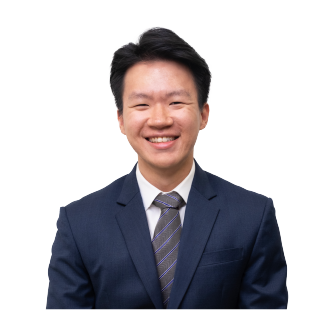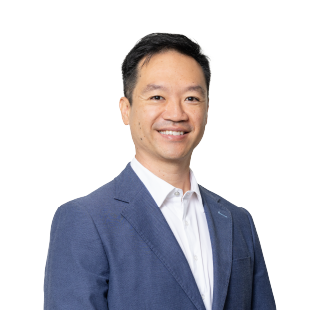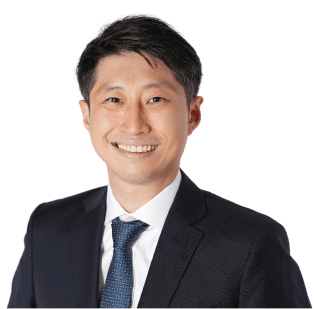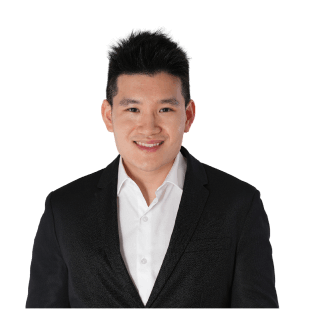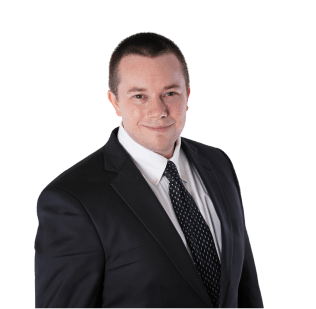Sleep Apnea Device

What is Sleep Apnea?
Sleep apnea is a sleep disorder characterised by pauses in breathing during sleep. Picture this: You're nestled in your cozy bed, relaxed and about to drift into a deep sleep. Suddenly, you find yourself jolting awake, gasping for air as your breathing is interrupted. This scenario is a reality for many people with sleep apnea. These pauses can last from a few seconds to minutes and can occur multiple times per hour.
Some common symptoms of sleep apnea include loud snoring and pauses in breathing during sleep, which are often noticed by others. These pauses can lead to choking or gasping sounds when breathing resumes.
To analyse sleep patterns professionally, overnight sleep studies can be conducted to measure breathing disturbances and blood oxygen levels. Untreated sleep apnea can lead to serious consequences, such as an increased risk of high blood pressure, heart disease and other health issues. Seeking proper diagnosis and sleep apnea treatment is crucial for managing sleep apnea effectively and improving overall health and quality of life.

What Causes Obstructive Sleep Apnea?
There are three types of sleep apnea: obstructive sleep apnea (OSA), central sleep apnea (CSA) and a combination of both. OSA, the most common type, occurs when the upper airway, including the throat and tongue, becomes partially or completely blocked during sleep.
During sleep, all our muscles relax. In people without OSA, the throat muscles relax without blocking the airways. However, in those with OSA, these muscles relax excessively, leading to the blockage.
The body's response to this is disruptive - it briefly rouses the person from sleep to reopen the airway. These awakenings are usually so quick that the person doesn't remember them. However, the body still recognises the disruptions, leading to poor sleep quality.
Factors that increase the risk of OSA include excess body weight, thicker neck circumference, family history, use of alcohol and certain medical conditions like hypothyroidism.
Sleep apnea (moderate to severe) affects 1 out of every 3 Singaporeans.
Koh WP, Mok Y, Poh Y, Kam JW, Wong HS. Prevalence of positional obstructive sleep apnoea (OSA) among patients with OSA in a tertiary healthcare institution in Singapore. Singapore Med J. 2020 Dec;61(12):665-666. doi: 10.11622/smedj.2020179. Erratum in: Singapore Med J. 2021 Jan;62(1):55. PMID: 33415342; PMCID: PMC7930302.
Managing Sleep Apnea

CPAP Machine
CPAP machine is often the first line of therapy for moderate to severe cases. It involves wearing a mask connected to a machine that delivers a continuous air stream into the airway, preventing it from collapsing during sleep.
CPAP therapy is effective in preventing pauses in breathing, reducing snoring, improving nighttime breathing and alleviating daytime sleep apnea symptoms.

Sleep Apnea Devices
Sleep apnea devices are custom-made devices that treat sleep apnea by keeping the throat open during sleep.
These devices are worn in the mouth, similar to a sports mouthguard or orthodontic retainer.
They are typically indicated for individuals who cannot tolerate CPAP therapy or have mild to moderate sleep apnea.

Lifestyle Changes
Lifestyle modifications can play a significant role in managing sleep apnea. These changes may include weight loss, regular exercise, avoiding alcohol and sedatives before bedtime, sleeping on your side and maintaining good sleep hygiene, such as creating a comfortable sleep environment and going to bed and waking up at the same time each day.
-1.png?width=80&height=80&name=image%20240%20(1)-1.png)
Oral Medications

Surgery
For severe cases, surgery may be advised such as:
- Tonsillectomy and adenoidectomy - Removal of enlarged tonsils and adenoids.
- Septoplasty or Turbinate Reduction - Correcting deviated nasal septum or reducing nasal turbinates.
- Maxillomandibular Advancement (MMA) - Repositioning the upper and lower jaw to reduce airway obstruction.

CPAP Machine
CPAP machine is often the first line of therapy for moderate to severe cases. It involves wearing a mask connected to a machine that delivers a continuous air stream into the airway, preventing it from collapsing during sleep.
CPAP therapy is effective in preventing pauses in breathing, reducing snoring, improving nighttime breathing and alleviating daytime sleep apnea symptoms.

Sleep Apnea Devices
Sleep apnea devices are custom-made devices that treat sleep apnea by keeping the throat open during sleep.
These devices are worn in the mouth, similar to a sports mouthguard or orthodontic retainer.
They are typically indicated for individuals who cannot tolerate CPAP therapy or have mild to moderate sleep apnea.

Lifestyle Changes
Lifestyle modifications can play a significant role in managing sleep apnea. These changes may include weight loss, regular exercise, avoiding alcohol and sedatives before bedtime, sleeping on your side and maintaining good sleep hygiene, such as creating a comfortable sleep environment and going to bed and waking up at the same time each day.
-1.png?width=80&height=80&name=image%20240%20(1)-1.png)
Oral Medications

Surgery
For severe cases, surgery may be advised such as:
- Tonsillectomy and adenoidectomy - Removal of enlarged tonsils and adenoids.
- Septoplasty or Turbinate Reduction - Correcting deviated nasal septum or reducing nasal turbinates.
- Maxillomandibular Advancement (MMA) - Repositioning the upper and lower jaw to reduce airway obstruction.
Benefits of Sleep Apnea Devices
.png?width=600&height=520&name=Rotate%20-90%20degree%20(47).png)
By keeping the airway open (mandibular advancement devices) and reducing breathing pauses, sleep apnea devices can improve the quality of sleep, leading to a more restful night.
Many sleep apnea devices also help reduce or eliminate snoring, which can be disruptive to both the individual with sleep apnea and their bed partner.
Compared to CPAP machines, which can be bulky and heavy, oral appliances are lightweight. This makes them more comfortable to carry and less of a burden when on the move.
Sleep apnea devices are custom-designed to fit your teeth's unique shape and size, ensuring comfort. This is crucial because you'll wear the device for extended periods during sleep.
How Do Sleep Apnea Devices Work?
Sleep apnea devices are designed to manage the symptoms by improving airflow and reducing breathing pauses, thus enhancing sleep quality.
These custom appliances are inserted into the mouth and fit over both the upper and lower teeth. They work by holding the lower jaw slightly forward to keep the airway open during sleep. They are therefore also known as Mandibular Advancement Devices (MAD).
Unlike CPAP machines that manually force air, these devices guide your lower jaw forward, preventing the collapse of soft tissues at the back of your throat. This guidance optimises airflow, reduces obstruction and improves breathing, leading to good sleep quality.
Sleep Apnea Devices at Dental Designs Clinic
16.9.png?width=900&height=507&name=Instagram%20front%20cover%20designs%2c%20square%20(55)16.9.png)

- DuraSleep Lite sleep apnea device has a compact design.
- It is fabricated in Dental Designs Clinic's in-house lab in Singapore, with materials from Germany (ISO 13485 and ISO 9001–certified).
- It consists of two splints for the upper and lower jaws. Lateral connectors hold the lower jaw in a predetermined position during sleep.
- This jaw positioning helps reduce airway constriction, a common cause of snoring.
- Indicated for first-time users who is looking to try an oral appliance for the management of mild to moderate obstructive sleep apnea.

- DuraSleep is a sleep apnea device made from medical-grade nylon using 3D printing technology. This material is durable, allowing for the creation of thin yet strong appliances that can withstand daily use in the mouth.
- Nylon is durable and can be made as thin as 0.5mm. This thinness doesn't compromise its strength, making it ideal for creating comfortable and effective appliances.
- Unlike acrylic, nylon reduces the risk of allergic reactions or intolerance, making it a safer option.
- The precision achieved with 3D printing ensures a perfect fit for the appliance.
- Indicated for patients requiring a thin and durable oral appliance, particularly those with sensitivity to acrylic materials.

- SomnoDent sleep apnea devices are crafted using computer-aided design software and milled from a single piece of dental acrylic.
- They have an inner liner to cushion the device against your teeth, ensuring comfort and preventing it from slipping off during sleep.
- They are easily adjustable to ensure the perfect fit for your mouth.
- The design gently closes your mouth while you sleep, promoting breathing through your nose.
- Indicated for those with mild to moderate obstructive sleep apnea who require an adjustable, stable appliance with enhanced comfort and retention.
Sleep Apnea Devices at Dental Designs Clinic

- DuraSleep Lite sleep apnea device has a compact design.
- It is fabricated in Dental Designs Clinic's in-house lab in Singapore, with materials from Germany (ISO 13485 and ISO 9001–certified).
- It consists of two splints for the upper and lower jaws. Lateral connectors hold the lower jaw in a predetermined position during sleep.
- This jaw positioning helps reduce airway constriction, a common cause of snoring.
- Indicated for first-time users who is looking to try an oral appliance for the management of mild to moderate obstructive sleep apnea.
- DuraSleep is a sleep apnea device made from medical-grade nylon using 3D printing technology. This material is durable, allowing for the creation of thin yet strong appliances that can withstand daily use in the mouth.
- Nylon is durable and can be made as thin as 0.5mm. This thinness doesn't compromise its strength, making it ideal for creating comfortable and effective appliances.
- Unlike acrylic, nylon reduces the risk of allergic reactions or intolerance, making it a safer option.
- The precision achieved with 3D printing ensures a perfect fit for the appliance.
- Indicated for patients requiring a thin and durable oral appliance, particularly those with sensitivity to acrylic materials.
- SomnoDent sleep apnea devices are crafted using computer-aided design software and milled from a single piece of dental acrylic.
- They have an inner liner to cushion the device against your teeth, ensuring comfort and preventing it from slipping off during sleep.
- They are easily adjustable to ensure the perfect fit for your mouth.
- The design gently closes your mouth while you sleep, promoting breathing through your nose.
- Indicated for those with mild to moderate obstructive sleep apnea who require an adjustable, stable appliance with enhanced comfort and retention.
What Causes Dark Patchy Gums?
Just like our skin, our gums can vary in shades. However, they can sometimes appear uneven or patchy instead of having a consistent colour. This condition, known as gingival hyperpigmentation, is often caused by an overproduction of melanin and may be triggered by:
.png?width=101&height=101&name=Frame%20732%20(27).png)
Genetics
Individuals with darker skin tones naturally tend to have darker gums. Additionally, certain ethnic groups, like of African or Asian descent are more likely to have naturally darker gums.
.png?width=101&height=101&name=Frame%20733%20(8).png)
Smoking
Exposure to the chemicals in tobacco smoke can stimulate melanin production in the gums, a phenomenon commonly known as "Smoker's Melanosis."
.png?width=101&height=100&name=Frame%20733%20(7).png)
Hormonal Changes
Hormonal fluctuations may influence melanin production in the body, such as during pregnancy or puberty.
.png?width=100&height=100&name=Frame%20732%20(25).png)
Medications and Medical Conditions
Certain medications like antimalarial drugs and antibiotics as well as specific medical conditions such as Addison's disease have been associated with darker gums.
Did You Know?
Laser gum depigmentation is also known as gum whitening or gum bleaching as it removes dark spots to reveal a pinker, even-toned gum appearance. Despite the terms "whitening" and "bleaching," this procedure does not involve the use of actual bleach at all!
Rather, it uses laser to target and remove excess melanin from the gums. This is a safe and painless procedure that is generally completed in just one visit and the results can last for up to 20 years.
Interested to know about teeth whitening or teeth bleaching at Dental Designs instead?
Simply click the link below!
Process of Getting A Sleep Apnea Device at Dental Designs
.png?width=370&height=342&name=Rectangle%2053%20(16).png)
1. Comprehensive Consultation
At Dental Designs, we believe in understanding your individual needs and concerns, which is why our consultation process is thorough and detailed.
During your personalised consultation session, our dentist will:
- Assess your dental health, discuss your symptoms and determine the suitability of getting a sleep apnea device specifically for your unique dental situation.
- Analyse your medical background, which includes lifestyle factors such as smoking and current medications.
.png?width=370&height=341&name=Rectangle%2053%20(18).png)
2. 3D Teeth Scanning
After reviewing the examination findings, the dentist will present you with different treatment options. If you decide to proceed with a sleep apnea device, the procedure will begin by obtaining your dental impressions.
Using our intra-oral scanner, we will scan your entire teeth as well as your bite, to create a 3D digital impression. This process is quick and provides accurate images of your dental anatomy. With 3D scanning, we can capture every detail of your teeth, ensuring a perfect fit for your device.

3. Fabrication of Sleep Apnea Device
After we receive your digital impressions, your sleep apnea device will be sent for fabrication. Turnaround times vary by device:
-
DuraSleep Lite: ~2 weeks
-
DuraSleep: ~2 weeks
-
SomnoDent: 3-4 weeks

4. Issue of Sleep Apnea Device
Once your device is ready, you'll return to have it fitted. Our dentist will ensure that the device fits properly and is comfortable to wear. They may make adjustments to the device to improve its fit and effectiveness.

4. Review Checks
Regular follow-up visits will be scheduled to monitor your progress with the device. Your doctor will assess how well the device is working for you and make any necessary adjustments.
Proper maintenance of your sleep apnea device is important for its effectiveness and longevity. Your doctor will also provide you with instructions on how to clean and care for your device.

Curious about Sleep Apnea Devices in Singapore?
Grab our free Sleep Apnea Devices Guidebook
Feature
Number of implants needed
Implant placement
Implant angulation
Need for bone grafting and other surgical procedures like sinus lift and nerve repositioning
Treatment timeline
Traditional Implants
Requires one implant for each missing tooth
Implants have to be placed where the individual tooth is missing
Align with adjacent teeth and supporting bone
High probability, especially if sufficient bone is not present to support the implant, or vital structures like nerves and sinus membrane are in close proximity
Have to wait for a healing period of 3-6 months before artificial teeth can be placed
All-on-4 Implants
Requires 4 implants to replace an entire jaw of missing teeth
Implants are strategically placed in areas of jawbone with the highest bone density
Two implants at the back are placed at 30-45 degrees
Less probability of requiring adjunct surgical procedures
You receive your temporary artificial teeth immediately after placement of the implants
What It Means If You Choose All-on-4
Overall cost of treatment is reduced
Stable implants and artificial teeth
Stress from daily activities such as chewing and swallowing is distributed efficiently
Overall cost of treatment is reduced, less recovery time and less stress for patient
Patient receive their new teeth on the same day as surgery
Feature
Number of implants needed
Implant placement
Implant angulation
Need for bone grafting and other surgical procedures like sinus lift and nerve repositioning
Treatment timeline
Traditional Implants
Requires one implant for each missing tooth
Implants have to be placed where the individual tooth is missing
Align with adjacent teeth and supporting bone
High probability, especially if sufficient bone is not present to support the implant, or vital structures like nerves and sinus membrane are in close proximity
Have to wait for a healing period of 3-6 months before artificial teeth can be placed
All-on-4 Implants
Requires 4 implants to replace an entire jaw of missing teeth
Implants are strategically placed in areas of jawbone with the highest bone density
Two implants at the back are placed at 30-45 degrees
Less probability of requiring adjunct surgical procedures
You receive your temporary artificial teeth immediately after placement of the implants
What It Means If You Choose All-on-4
Overall cost of treatment is reduced
Stable implants and artificial teeth
Stress from daily activities such as chewing and swallowing is distributed efficiently
Overall cost of treatment is reduced, less recovery time and less stress for patient
Patient receive their new teeth on the same day as surgery
Feature
Number of implants needed
Implant placement
Implant angulation
Need for bone grafting and other surgical procedures like sinus lift and nerve repositioning
Treatment timeline
Traditional Implants
Requires one implant for each missing tooth
Implants have to be placed where the individual tooth is missing
Align with adjacent teeth and supporting bone
High probability, especially if sufficient bone is not present to support the implant, or vital structures like nerves and sinus membrane are in close proximity
Have to wait for a healing period of 3-6 months before artificial teeth can be placed
All-on-4 Implants
Requires 4 implants to replace an entire jaw of missing teeth
Implants are strategically placed in areas of jawbone with the highest bone density
Two implants at the back are placed at 30-45 degrees
Less probability of requiring adjunct surgical procedures
You receive your temporary artificial teeth immediately after placement of the implants
What It Means If You Choose All-on-4
Overall cost of treatment is reduced
Stable implants and artificial teeth
Stress from daily activities such as chewing and swallowing is distributed efficiently
Overall cost of treatment is reduced, less recovery time and less stress for patient
Patient receive their new teeth on the same day as surgery
Feature
Number of implants needed
Implant placement
Implant angulation
Need for bone grafting and other surgical procedures like sinus lift and nerve repositioning
Treatment timeline
Traditional Implants
Requires one implant for each missing tooth
Implants have to be placed where the individual tooth is missing
Align with adjacent teeth and supporting bone
High probability, especially if sufficient bone is not present to support the implant, or vital structures like nerves and sinus membrane are in close proximity
Have to wait for a healing period of 3-6 months before artificial teeth can be placed
All-on-4 Implants
Requires 4 implants to replace an entire jaw of missing teeth
Implants are strategically placed in areas of jawbone with the highest bone density
Two implants at the back are placed at 30-45 degrees
Less probability of requiring adjunct surgical procedures
You receive your temporary artificial teeth immediately after placement of the implants
What It Means If You Choose All-on-4
Overall cost of treatment is reduced
Stable implants and artificial teeth
Stress from daily activities such as chewing and swallowing is distributed efficiently
Overall cost of treatment is reduced, less recovery time and less stress for patient
Patient receive their new teeth on the same day as surgery
Cost of Sleep Apnea Device in Singapore
The cost of sleep apnea device can vary significantly, depending on the treatment plan developed by the dentist for each individual patient. At Dental Designs, we provide various types of custom-made sleep apnea devices to cater to specific needs.
The SomnoDent device is made from milled acrylic. Our DuraSleep device is 3D printed and made of medical-grade Nylon. We also offer our in-house mandibular advancement device, DuraSleep Lite.
If you're visiting us for the first time, we would recommend you to get a check up and cleaning first. This is important because it helps us ensure that your sleep apnea device fits well. During your consultation, your dentist will assess your specific needs and provide you with a detailed breakdown of the costs involved, enabling you to make an informed decision about your treatment and budget accordingly.
Starts From
$1,635*
| DuraSleep Lite | $1,635 |
| DuraSleep | $4,349.10 |
| SomnoDent | $5,450 |
*Price are inclusive of 9% GST
Creating Smiles, Changing Lives
Over 28 reviews
The service and doctor is the best in town! The customer service and receptionists are very friendly! Dr Phillip Miller and Dr Noah Teo is very nice and very professional on their skill! They also very patient to explain to me about the treatment!
Will come back again!
Thank you very much!
李岳侨
J. Kho
This dental clinic has very good staff who are well trained and friendly. The dentists are also very good and will explain the treatment in detail before starting treatment. The equipment is very high tech and I believe they are able to do high quality work as I did my crown here and it looks much better than my colleague who also recently did his at another place. The waiting room is also very comfortable. good job!
C. Zheng De
This clinic is one of the best I have ever seen. I saw dr Justin for my implant which I did many years ago, the tooth was loose, and other drs told me to remove it as they could not find out what brand it was but dr Justin was able to take 3d xrays and locate the brand and specially ordered the part in. he saved me from having to do a surgery to remove and put a new implant which would have cost me a bomb. the tooth looks even better than the original thanks to the experieced dental technician Katsuya from Japan.
Very happy and will keep coming back for my regular dental.
G. Hock An
my workplace is close by and I had a problem with my tooth for a few days, so I made an appointment to come down. The receptionist who booked my appointment was very helpful and friendly to explain the way to the clinic from my office. I saw Dr Nicholas who was able to do a root canal treatment on the same visit so that I didn't need to come back. I felt safe and comfortable to do my dental treatment here as the dental picks are all wrapped up and sterilized and only opened before each treatment when im inside.
P. Wendy
Hear From Our Happy Patients
The service and doctor is the best in town! The customer service and receptionists are very friendly! Dr Phillip Miller and Dr Noah Teo is very nice and very professional on their skill! They also very patient to explain to me about the treatment!
Will come back again!
Thank you very much!
李岳侨
J. Kho
This dental clinic has very good staff who are well trained and friendly. The dentists are also very good and will explain the treatment in detail before starting treatment. The equipment is very high tech and I believe they are able to do high quality work as I did my crown here and it looks much better than my colleague who also recently did his at another place. The waiting room is also very comfortable. good job!
C. Zheng De
This clinic is one of the best I have ever seen. I saw dr Justin for my implant which I did many years ago, the tooth was loose, and other drs told me to remove it as they could not find out what brand it was but dr Justin was able to take 3d xrays and locate the brand and specially ordered the part in. he saved me from having to do a surgery to remove and put a new implant which would have cost me a bomb. the tooth looks even better than the original thanks to the experieced dental technician Katsuya from Japan.
Very happy and will keep coming back for my regular dental.
G. Hock An
my workplace is close by and I had a problem with my tooth for a few days, so I made an appointment to come down. The receptionist who booked my appointment was very helpful and friendly to explain the way to the clinic from my office. I saw Dr Nicholas who was able to do a root canal treatment on the same visit so that I didn't need to come back. I felt safe and comfortable to do my dental treatment here as the dental picks are all wrapped up and sterilized and only opened before each treatment when im inside.
P. Wendy
Google Rating
Based on 1000+ Google reviews
Frequently Asked Questions About Sleep Apnea Devices In Singapore
There are three main types of sleep apnea:
-
Obstructive Sleep Apnea (OSA): This is the most common type, occurring when the throat muscles relax and block the airway during sleep.
-
Central Sleep Apnea (CSA): This type involves the central nervous system, where the brain fails to send proper signals to the muscles that control breathing.
-
Complex Sleep Apnea: This is a combination of both obstructive and central sleep apnea.
Each type of sleep apnea requires different treatment approaches, so it's important to receive a proper diagnosis from a healthcare professional.
Several devices for sleep apnea are available for treating mild to moderate obstructive sleep apnea (OSA). At Dental Designs Clinic, we offer two types of sleep apnea devices, that is DuraSleep and SomnoDent. Our doctor will assess your specific needs and recommend the most suitable device for treating your OSA.
Using a sleep apnea device can lead to common side effects such as an open mouth posture and drooling during sleep. Additionally, users may experience soreness or pain in the jaw muscles and teeth, particularly the incisors, when they first start using the device. However, these side effects typically diminish over time with regular use. It's often recommended to wear the device consistently for up to six months to allow for a "wearing-in" period, during which the pain and discomfort should gradually reduce as the body adjusts to the appliance.
Yes, sleep apnea devices are considered safe and effective, especially for those with mild to moderate OSA who are unable to tolerate continuous positive airway pressure (CPAP) therapy.
Sleep apnea devices are custom-made oral appliances that fit over the upper and lower teeth and work by slightly advancing the lower jaw forward to keep the airway open during sleep. In some cases, they may be worn in conjunction with a CPAP machine to help lower high pressure needs.
It's important to work with a doctor to ensure the sleep apnea device is properly fitted and adjusted to minimise side effects and maximise effectiveness. Regular follow-ups are also important to monitor your progress and address any issues that may arise.
Sleep apnea can present with a range of symptoms, including-
- Loud Snoring: This can be intermittent or continuous and is often accompanied by gasping or choking sounds.
- Daytime Sleepiness: Experiencing excessive fatigue during the day, even after a full night's sleep, is a key symptom.
- Morning Headaches: Waking up with a headache is common due to fluctuations in oxygen levels during sleep.
- Dry Mouth: Mouth breathing while sleeping can result in dryness upon waking.
- Difficulty Concentrating: Impaired focus, attention and memory are common due to the disrupted sleep patterns.
- Decreased Libido: Fatigue and hormonal changes can lead to a reduced interest in sexual activity.
These symptoms can vary in severity and may not always be present. If you suspect you have sleep apnea, it's important to seek medical advice for proper diagnosis and treatment.
Untreated sleep apnea can result in serious health complications such as hypertension, stroke, irregular heart rhythms, enlarged heart muscle, congestive heart failure, diabetes and heart attacks. It can also impact daily life, leading to job impairment, work-related accidents or academic underachievement in children and adolescents. Seeking treatment is essential to reduce these risks and improve overall well-being.
Resolving sleep apnea is crucial for several reasons:
-
Improved Quality of Life: Treating sleep apnea can lead to better sleep quality, which can improve your overall quality of life and well-being.
-
Reduced Risk of Health Problems: Untreated sleep apnea is linked to several serious health issues, including hypertension, stroke, heart disease and diabetes. Resolving sleep apnea can lower these risks.
-
Increased Energy and Alertness: Treating sleep apnea can reduce daytime sleepiness and fatigue, helping you feel more energized and alert during the day.
-
Better Mental Health: Sleep apnea has been associated with an increased risk of depression and anxiety. Resolving sleep apnea can improve your mental health and mood.
-
Improved Relationships: Loud snoring and interrupted sleep can strain relationships. Resolving sleep apnea can lead to quieter nights and better sleep for both you and your partner.
-
Reduced Risk of Accidents: Sleep apnea can increase the risk of workplace accidents and motor vehicle crashes due to daytime sleepiness. Treating sleep apnea can make you safer behind the wheel and at work.
Overall, resolving sleep apnea can have a profound positive impact on your health, well-being, and quality of life.
Get in Touch
We’d love to hear from you!
Schedule Appointment
Directly with our Online Booking Form


